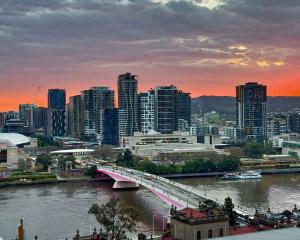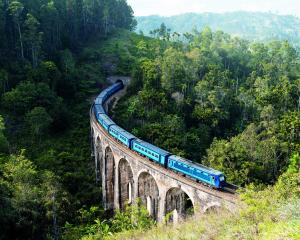
With the possible exception of the Himalayas, there’s nowhere in the world more renowned for narrow-gauge steam than North Wales. This Celtic heartland is home to a profusion of preserved locomotives, from the rather diminutive to the positively tiny, a little fleet which whistles and wheezes about the landscapes charming children and trainspotters alike.
Some skirt lakes, others race seaside promenades, one or two scale mountains or rattle under castle battlements. The Welsh Highland and Ffestiniog Railways do all the above. Combine the two, and over a day you can travel about 62km to the soundtrack of chuffing locomotives and rattling rails.

Soon the towers of the castle retreat behind us and the train rolls into the Arcadian Gwyrfai Valley, the massif of Yr Wyddfa (also known as Snowdon) rising to the left, and the treacherous spine of Nantlle Ridge just visible to the right through plumes of steam. Narrow-gauge railways are common in North Wales — owing to the topography, smaller engines can more deftly navigate inclines, descents and tight curves. This is soon very evident. After a halt at Rhyd Ddu (a trailhead for hikers ascending Yr Wyddfa), the train slaloms through conifer forests and zigzags down the contours into the heart of Beddgelert, arguably the prettiest village in the area.

The port of Porthmadog is soon announced by the cry of seagulls. The rails of the Welsh Highland Railway briefly and bizarrely trespass on a major road, before coming to a halt by the harbour. Here, many passengers disembark to take pictures of the mighty Garratt engines that have hauled them over the hills. What catches the eye, however, are the distinctive Fairlie locomotives — a Frankenstein’s monster of a machine, with boilers at both ends. These locomotives are the signature of the Welsh Highlands compatriot, the Ffestiniog Railway now part of the same company and using the same station at Porthmadog, albeit with a very different history.

Unlike the Welsh Highland Railway, the Ffestiniog segued from a working line to a heritage operation with very little hiatus in the late 1950s.
Today, travelling aboard its restored rolling stock, you get an intimate sense of what it was like riding the line in its Victorian heyday. Simple, no-frills quarrymen’s coaches are the authentic choice, but ride the luxury Pullman-style carriages with plush armchairs and cups of tea clinking on linen-clad tables and you might imagine yourself a top-hatted director of the line.

Today, both lines are busy with happy day-trippers, but the iron rails were once laid to steal the heart out of these mountains.

The details
Start/Finish: Caernarfon/Blaenau Ffestiniog
Distance: 61km

Ticket types: Seat options on the Ffestiniog and Welsh Highland Railways vary according to the particular train, but broadly include standard class and first class, the latter subdivided into Pullman and Observation coaches.
Food and drink are available on some departures, including cream teas with Welsh cakes.
How to book: Book direct for both railways at festrail.co.uk
Things to know: Be aware that not all routes cover the length of the line: on the Ffestiniog Railway, the Woodland Wanderer makes a return trip from Porthmadog only as far as Tan-y-Bwlch, while on the Welsh Highland, the Gelert Explorer runs from Caernarfon to Beddgelert.
The book
Epic Train Trips of the World by Lonely Planet, RRP $55.











